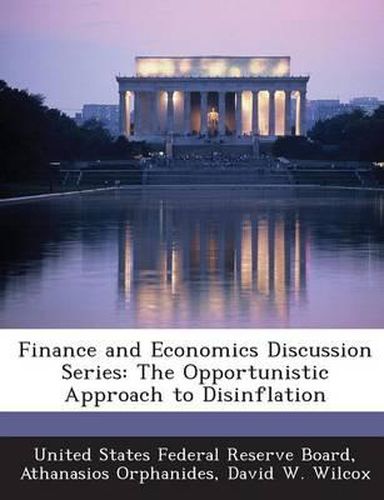Readings Newsletter
Become a Readings Member to make your shopping experience even easier.
Sign in or sign up for free!
You’re not far away from qualifying for FREE standard shipping within Australia
You’ve qualified for FREE standard shipping within Australia
The cart is loading…






This paper explores the theoretical foundations of a new approach to monetary policy. Proponents of this approach hold that when inflation is moderate but still above the long-run objective, the Fed should not take deliberate anti-inflation action, but rather should wait for external circumstances-such as favorable supply shocks and unforeseen recessions-to deliver the desired reduction in inflation. While waiting for such circumstances to arise, the Fed should aggressively resist incipient increases in inflation. This strategy has come to be known as \“the opportunistic approach to disinflation.\” We deduce policymaker preferences that rationalize the opportunistic approach as the optimal strategy for disinflation in the context of a model that is standard in other respects. The policymaker who is endowed with these preferences tends to focus on stabilizing output when inflation is low, but on fighting inflation when inflation is high. We contrast the opportunistic approach to amore conventional strategy derived from strictly quadratic preferences.
$9.00 standard shipping within Australia
FREE standard shipping within Australia for orders over $100.00
Express & International shipping calculated at checkout
This paper explores the theoretical foundations of a new approach to monetary policy. Proponents of this approach hold that when inflation is moderate but still above the long-run objective, the Fed should not take deliberate anti-inflation action, but rather should wait for external circumstances-such as favorable supply shocks and unforeseen recessions-to deliver the desired reduction in inflation. While waiting for such circumstances to arise, the Fed should aggressively resist incipient increases in inflation. This strategy has come to be known as \“the opportunistic approach to disinflation.\” We deduce policymaker preferences that rationalize the opportunistic approach as the optimal strategy for disinflation in the context of a model that is standard in other respects. The policymaker who is endowed with these preferences tends to focus on stabilizing output when inflation is low, but on fighting inflation when inflation is high. We contrast the opportunistic approach to amore conventional strategy derived from strictly quadratic preferences.